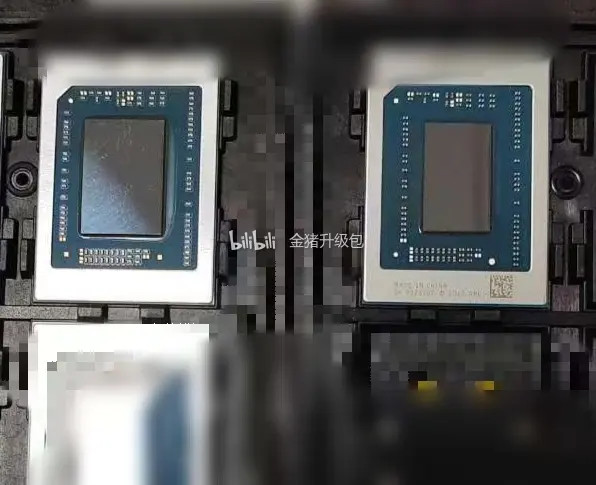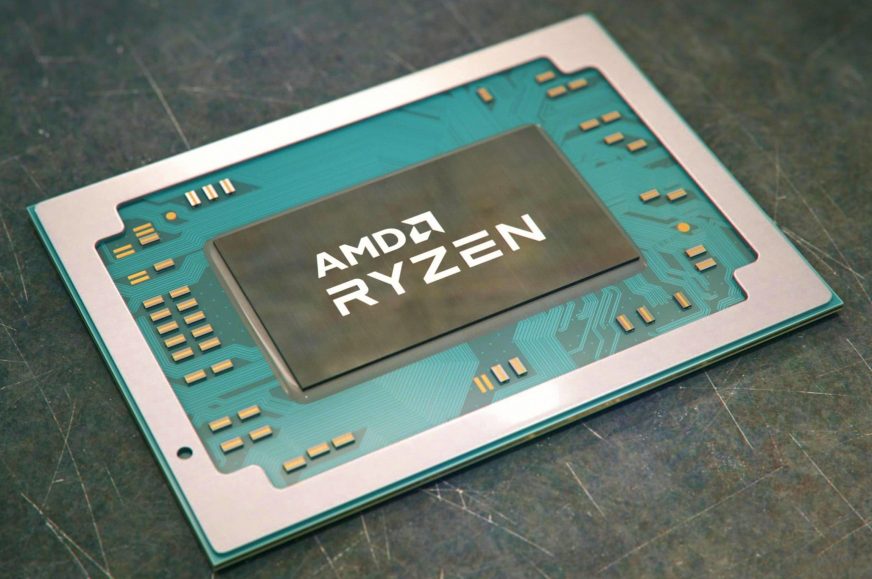New cheap APU revealed by the specifications on AMD's website, including the die area
Many like to diss Intel for hybrid processors but leaks has long been showing that AMD is also preparing their own take on it – the “LITTLE Phoenix” or Phoenix2 APU, to be used in cheaper mobile Ryzen 7000 SKUs. Phoenix2 is to feature Zen 4 big cores and Zen 4c as little cores, which is a compact redesign recently introduced in servers. Now this hybrid SoC has indeed appeared and AMD has officially confirmed it on their website.
There was already little doubt about the existence of this big.LITTLE version of Ryzen 7000, but irrefutable evidence arrived at the end of June. On the Chinese Bilibili, photos of a BGA version for laptops have surfaced, showing a die noticeably smaller than the full-size Phoenix octa-core APU used in the Ryzen 7040HS. At the same time, we also already have evidence that AMD will use this chip in the mobile Ryzen 7000.
According to leakers on Twitter with the nicknames xinoassasin1 and BusAlexey, the big.LITTLE chip is used in the Ryzen 5 7540U processor, which is a hexa-core. This allows AMD to use both the rejects from the big Phoenix production and the smaller cheaper Phoenix2 chip in this model. According to these sources, AMD will produce this processor in both versions, which should be more or less interchangeable and have the same specs. The packaging is apparently the same.
Phoenix2 contains two large Zen 4 cores, which can reach up to 4.9 GHz for single-threaded applications in Ryzen 5 7540U, and four Zen 4c cores, which probably have a lower achievable clock speed, but will be used mainly in multi-threaded applications. Because both types of cores supposedly have the same IPC and instructions support, AMD can interchangeably use chips where all the cores are Zen 4 as well as those where a portion is replaced by Zen 4c. The TDP of the 7540U should be 15–30 W. The GPU of the Phoenix2 chip is apparently supposed to have 256 shaders (4 CU), which is probably what the Ryzen 5 7540U uses.

While AMD has not directly confirmed the use of these two types of the chip in Ryzen 5 7540U, the company did confirm that Phoenix2 will be used in lower-end models, which will probably be based on this die exclusively. The company has published specifications for the Ryzen 3 7440U, a quad-core model with Zen 4 architecture (partly Zen 4c in reality) and clock speeds of 3.0–4.7 GHz. In the detailed specs, AMD lists the area of the die used, which is where they officially confirm that this smaller chip is used. Indeed, the classic octa-core Phoenix has an area of 178 mm², but for this Ryzen 3 7440U the specs say 137 mm².

So this is an official source giving Phoenix2 die area; we assume it is still made on a 4nm node. It appears to measure roughly 77% of the area of the higher performance version. The cost is reducing the number of cores to six (while replacing four cores with the compact version) and reducing the integrated GPU from 768 shaders to just 256. Also, the L3 cache has probably shrunk from 16 MB to 8 MB (it’s also possible that it’s 4 MB for the two Zen 4 cores and a separate 4 MB for the small Zen 4c cores). AMD has probably also eliminated the Ryzen AI accelerator, as that is only promised on higher-end models.
The reason why the die shrinking gains aren’t more significant is probably because the connectivity and components of the integrated “PCH” are probably still the same area or very similar – i.e. the number of PCIe lanes, video outputs, USB ports and dual-channel memory controller, multimedia accelerators, etc.
It’s worth noting that the architecture is only called Zen 4 in the specs. So it looks like AMD isn’t going to make any special note of the fact that these Ryzen 7000 models are hybrid, and probably considers the Zen 4c to be quite equivalent to the big Zen 4 in the mobile role. As long as the IPC is completely identical and the only difference is in clock speeds, there may really be zero functional difference between the two versions if they are used in a laptop and no one tries to overclock the cores. However, the claim that Zen 4 and Zen 4c behave exactly the same at a certain clock speed is something that has not yet been confirmed by independent testing, so it remains to be seen how justified this decision is.
Source: AMD, Bilibili, VideoCardz (1, 2), xinoassasin, BusAlexey
English translation and edit by Jozef Dudáš
⠀











